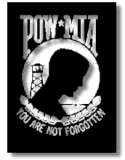


[Search Tip: Use " " for better search results ex. "John Q. Doe"; "City of ..."]
|
Prisoners
of War
|
| blank |
| The following information is as it appeared in "History of the 39th Bomb Group (VH)" by Robert Laird & David Smith on pages 401-408 which include the accounts by the individual indicated on the above navigational bar. Anyone with additional information appropriate for this section is encourage to contact updates@39th.org |
After interrogation, Japanese military laws and regulations for "Punishment of Enemy Plane Flight Personnel," stipulated that, with the exception of those bombing an accepted military target all crew members would be charged with inhumane and indiscriminate bombing. This procedure decreed that they would then be tried by a military court where, if found guilty the sentence would be immediate execution. Inasmuch, as few of the later B-29 raids were strategic but instead incendiary, an airman's chances for leniency were just about non-existent.
Death came without even a trial for one large group of downed American fliers. With Nagoya in ruins, the 20th Air Force now trained its sights on Tokyo. It was given a final one-two blow. On the nights of May 23rd and May 25th there were two attacks of greater than 500 B-29s each. The area destroyed by fire in the second of these raids exceeded even that of the devastating March strike. One of the many buildings leveled that night was part of a Tokyo military prison where 62 U. S. airmen were being held along with a number of Japanese military prisoners. All of the airmen burned to death. The prison commander later claimed that the Americans died because, in the intensity of the attack and confusion, the guards got to the American section of the building too late to free them. Amazingly, all of the 400 plus Japanese prisoners survived.
During this same raid, anti-aircraft fire was the heaviest yet encountered. Twenty-six B-29s were lost. As a result, a number of American air crewmen from downed planes were captured and brought to military police headquarters in Tokyo. Sgt. Michael J. Robertson was one of these. Robertson had lost consciousness after bailing out of his stricken B-29. When he came to, he was being attacked by a mob of Japanese men and women. He was beaten with rocks, sticks and their fists until they were dispersed by the Japanese military police. After he was brought to Japanese headquarters, he was again beaten, interrogated, and then placed in a small cell with 16 other prisoners. Conditions were primitive, discipline was strict, and rations were three bowls of partially cooked rice per day. Robertson received no medical attention for a broken leg and flak wounds. But, except for one man, all the Americans survived. This was probably due to their excellent physical condition when captured.
In the case of another B-29 that crashed that night, all the crew except one was killed. The commander of the Japanese unit that found the wreckage of this plane determined that the lone survivor was seriously wounded and quickly ordered one of his sergeants to carry out "Riashaku" (a Bushido term for "a sympathetic and merciful act to stop pain and hasten death"). The order of death by beheading was dutifully carried out on the spot.
 |
|||||||
6 |
6
|
||||||
Copyright © 2000 - 2025 - 39th.org|39thbombgroup.org
